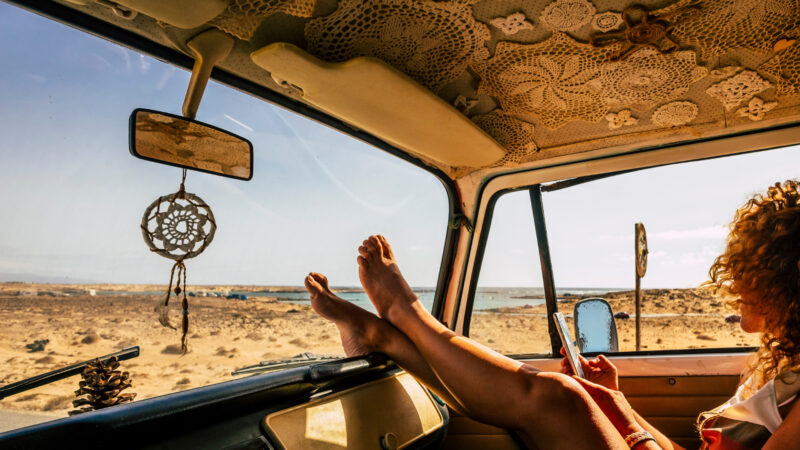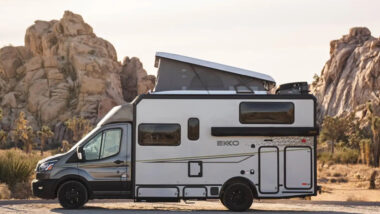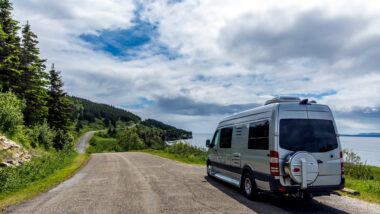Table of Contents Show
There are some unbelievable spots to drive your RV in the United States. However, we’re seeing many travelers heading south of the border to Mexico with their RVs. Mexico has been in the news over the past couple of years and earned the reputation for being unsafe. But is it safe to drive your RV in Mexico?
Today, we’ll examine whether you should consider adding Mexico as a destination to your RV bucket list. Let’s get started!
Do People RV in Mexico?
RVing is a popular way for travelers to experience Mexico, especially the Pacific Coast of Mexico and the Baja California peninsula. When most people take their RVs to Mexico, this is the area where they’ll travel.
They love the warm winters, beautiful beaches, and Mexican hospitality. There are plenty of delicious foods and activities for travelers to enjoy too. If you’re looking for a spot to spend the winter, this may be where you want to be.
However, traveling in a foreign country requires researching and securing the proper paperwork. Make sure you spend plenty of time researching the route and logistics for traveling in Mexico. You don’t want to be at the border without the proper documents.
Does Mexico Have RV Parks?
It may surprise you that RV parks are becoming increasingly popular in Mexico. You’ll find everything from minimalist campsites on the beach to full-fledged, luxury RV parks. While the prices may not be as low as you would assume, they’re still typically more affordable than camping in the U.S. One of our favorite resources, Campendium, makes it extremely easy to find some of the best RV parks and campgrounds in all of Mexico.
Is It Safe to Drive Your RV in Mexico?
Driving your RV in Mexico, like anywhere else, can be both safe and unsafe. Some locations in Mexico have a reputation for experiencing higher amounts of crime. However, many locations in the U.S. and other countries also experience similar crime levels. Anytime you travel in an unfamiliar area, your safety should be a top priority.
It’s a good idea to check out the Department of State’s travel warnings for Mexico before planning your route. However, incidents involving RVers and travelers are typically rarer than the news and other media portray. The Baja California peninsula is one of the safest spots to visit in the country and has plenty to offer RVers.

What Documents Do I Need to Drive Into Mexico?
Anytime you’re crossing a border, you want to ensure you have your ducks in a row. This includes having the appropriate documents and permits that are necessary for the duration of your stay.
You, and anyone traveling along, will need to have a few documents. These include valid passports, a U.S. driver’s license, proof of vehicle registration, a temporary vehicle importation permit (TVIP), a Mexico tourist card/entry permit (FMM), and a Mexican tourist auto insurance policy for your vehicles.
Those towing a travel trailer or fifth wheel will also need to purchase a 10-year permit for their trailer (approximately $55) and a 180-day permit for their tow vehicle (admin fees plus a $200 to $400 deposit). The deposit gets refunded if you leave the country within the 180-day limit and didn’t commit any violations.
Keep in Mind: A lot of RVers prefer to get Dental Work Done in Mexico, but why is that? Click the link to learn why and if you should plan your next dentist visit in Mexico!
Tips for RVing in Mexico
If you’re heading south of the border to Mexico in your RV, there are a few tips that we think you should consider. Let’s look at a handful of tips that will ensure you have a smooth RV trip in Mexico.
Stick to the Toll Roads
We recommend RVers stick to the “cuotas,” also known as Mexican tolls roads. These are the nicest roads available in the country and are comparable to the United States interstate system. Some local roads have “topes,” large speed bumps that can appear seemingly out of nowhere.
The Green Angels are another reason to stay on the toll roads. These workers, similar to AAA, are available to assist tourists in need. They patrol the roads and offer free assistance but require you to purchase the necessary parts.
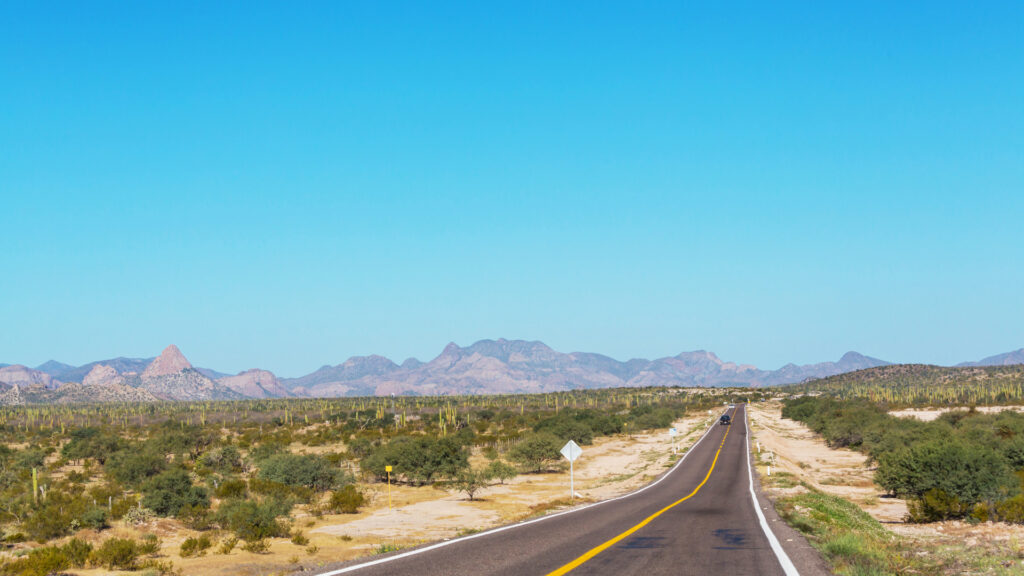
Stay In Parks; Do Not Boondock
While public lands are readily available in the U.S., that’s not the same in Mexico. You may think an area looks like a great spot to park your rig for the night, but it’s private land. Some landowners are more forgiving and graceful than others. Even on public lands, you can make yourself an easy target for anyone up to no good. We strongly recommend only staying in established RV parks and campgrounds.
Some inexpensive campgrounds provide boondocking-like experiences for RVers. You can find spots to park your rig, enjoy the sunset over the ocean, and fall asleep to the sounds of ocean waves without compromising your safety.
Don’t Drive After Dark
You may not realize it, but many roads and highways in the U.S. have lighting. This increases your ability to see objects in the middle or along the side of the road. However, this is not nearly as common in many parts of Mexico. The streets can be very dark and full of potholes, debris, and even animals.
You can also forget about the “topes” we mentioned earlier, which may or may not be painted a bright color to make them easy to see. Hitting a tope at a high rate of speed can do a tremendous amount of damage to your vehicle and RV. It’s a good idea to find a spot for the night in time to watch the sunset. This not only gives you an excellent view but increases your safety.
Avoid Known Problem Areas
Certain areas in Mexico have a reputation for being problem areas. Researching hotspots for seedy activity is worth your time and energy. These areas constantly change as criminals and activities move about the country.
The United States Department of State will often issue travel warnings for traveling to certain areas. From time to time, certain parts of Mexico will appear on one of these warning lists. You can check their website to see if there are any current travel advisories to any areas you’re planning to travel to.
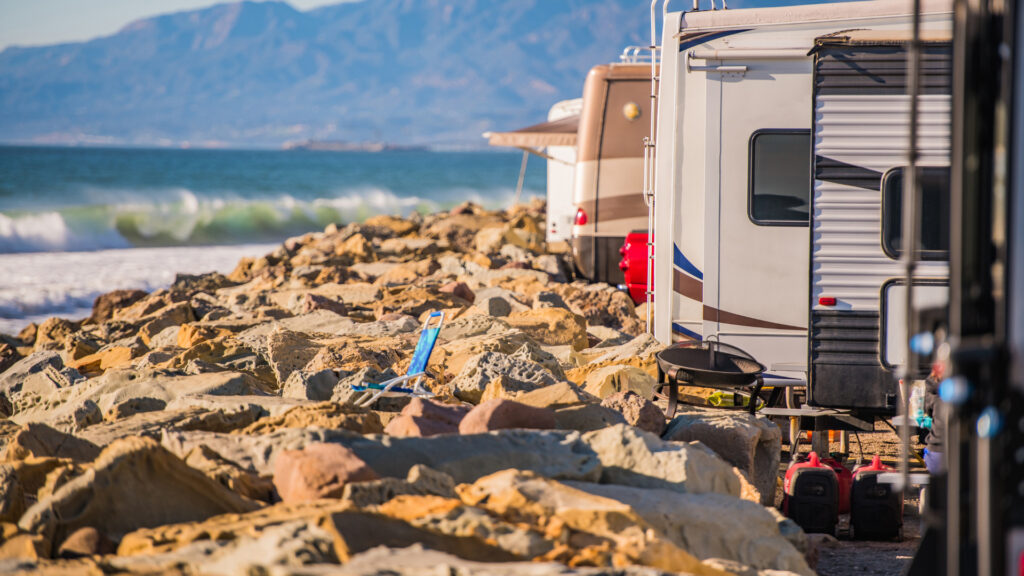
Bring Extra RV Parts
RVing isn’t nearly as common or popular as it is in the U.S. This means there’s no huge infrastructure or demand for RV parts and other essential supplies. Getting simple things like sewer or water hoses can be much more difficult and expensive than if you had purchased them north of the border.
It’s a good idea to bring along some extra parts to come to the rescue just in case something doesn’t go as planned. It can take substantially longer to get the parts necessary to get you back on the road. You don’t want to be stuck in an unfamiliar or unsafe area because you don’t have an important part.
Keep in Mind: Not sure where to get your RV parts before your trip to Mexico? Here are some of The Best Places to Get RV Parts and Supplies for Cheap!
Remember: You Can Always Travel With a Group
One of the best ways to see Mexico in an RV is through a caravan. Many businesses organize group trips to various areas in Mexico. This can be an affordable and extremely safe way to experience the country.
Many of these services have years of experience organizing group trips and have the entire process down to a science. They’ll help ensure you have everything necessary and organized for crossing the borders and that you have a safe place to stay at the end of the day.
If planning an RV trip to a foreign country intimidates you, it’s worth considering one of these caravan services. You can relax knowing that everything is planned and organized for you. Avoiding the hassles and stress of planning can be worth every penny for many travelers.
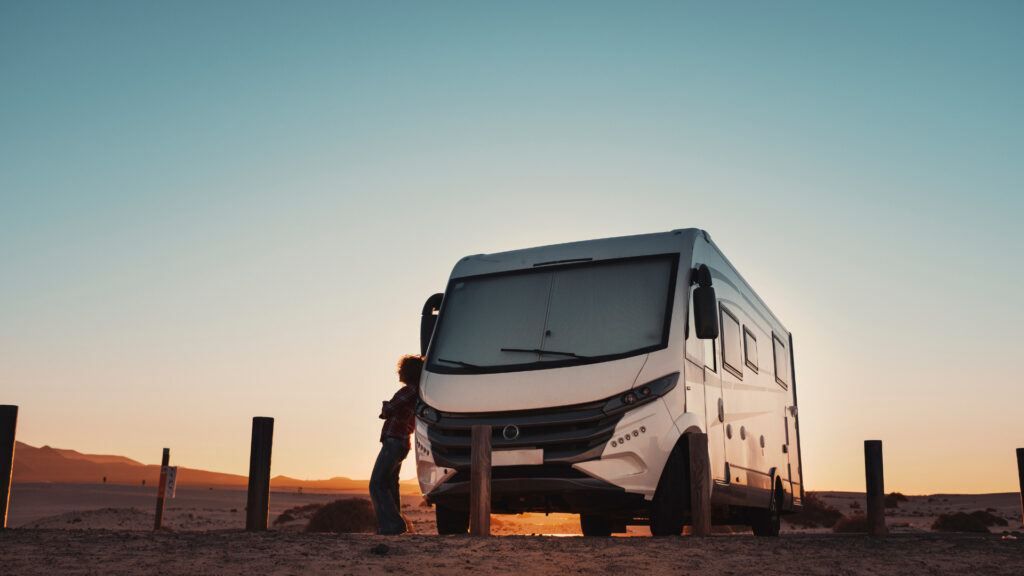
RVing in Mexico is Very Possible
Despite what you might have heard on the nightly news or read online, RVing in Mexico is possible. You can see the incredible landscapes, interact with the amazingly hospitable people, and still be safe. Take the time to do your research or take advantage of caravan services, and you can make unforgettable memories and experience the unique culture of Mexico.




